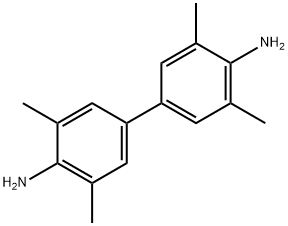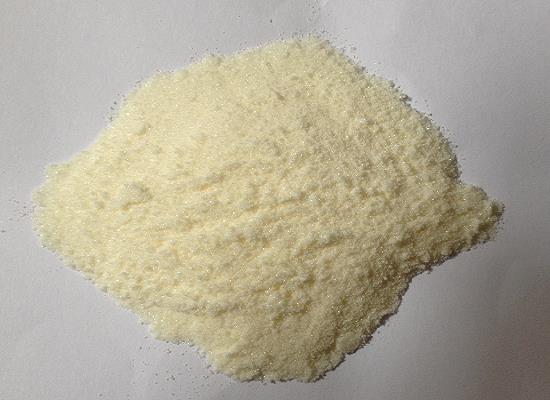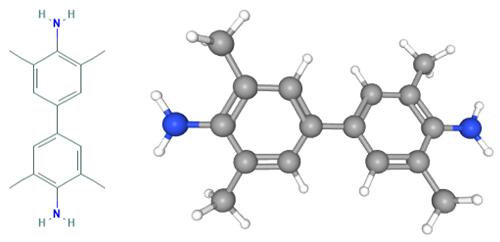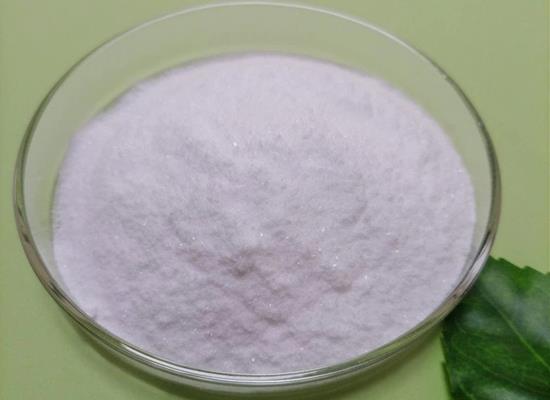Tetramethylbenzidine: An Acoustogenic Photoacoustic Probe for Reactive Oxygen Species Detection
General Description
Tetramethylbenzidine stands out as a non-toxic, non-carcinogenic acoustogenic dye with unique reactivity towards reactive oxygen and nitrogen species (ROS/RNS), making it an invaluable tool in analytical and biological applications. Tetramethylbenzidine's ability to undergo a color change to blue upon oxidation with specific ROS/RNS, such as hypochlorite and hydrogen peroxide, highlights its potential as a visual indicator and photoacoustic probe. This property is particularly beneficial in enzyme-linked immunosorbent assay (ELISA) tests and for enhancing photoacoustic imaging technology. Tetramethylbenzidine's selective reactivity and depth-resolved reporting capabilities offer a sensitive and selective alternative to traditional imaging methods, paving the way for new probe developments in biological investigations.
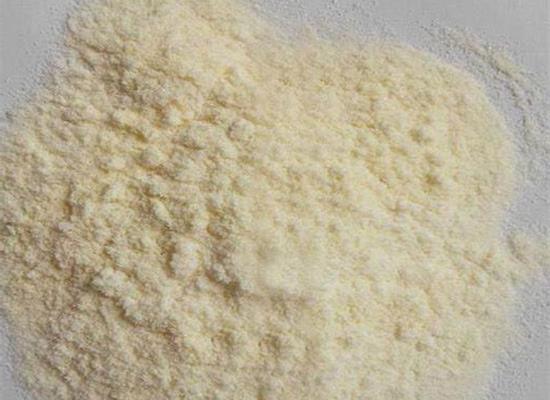
Figure 1. Tetramethylbenzidine
Properties as acoustogenic dye
Tetramethylbenzidine emerges as a promising candidate in the realm of acoustogenic dyes, particularly for its unique properties when interacting with reactive oxygen and nitrogen species (ROS/RNS). This compound is inherently non-colored, non-toxic, and non-carcinogenic, making it an ideal choice for various analytical applications. Upon reaction with certain ROS, Tetramethylbenzidine undergoes oxidation to form a blue oxidized complex, showcasing its potential as a visual indicator. This characteristic has been harnessed in enzyme-linked immunosorbent assay (ELISA) tests, where Tetramethylbenzidine serves as a visualizing agent, reacting with hydrogen peroxide (H2O2) in the presence of horseradish peroxidase to produce a detectable color change. The mechanism of Tetramethylbenzidine's action involves its oxidation by an oxidant agent, leading to the formation of a radical cation. This intermediate then interacts with another Tetramethylbenzidine molecule to create a blue charge transfer complex, absorbing at 652 nm. Under certain conditions, the presence of an additional oxidizing agent can further convert TMB into a yellow diimine product, with an absorption peak at 450 nm. In excess of oxidizing agents, TMB can also yield non-colored oxidized derivatives, demonstrating its versatile response to different chemical environments. 1
Applications as a pioneering acoustogenic photoacoustic probe
Tetramethylbenzidine emerges as a pioneering acoustogenic photoacoustic probe, particularly tailored for the detection of reactive oxygen and nitrogen species (ROS/RNS), which are pivotal in understanding a myriad of biological processes. Unlike traditional imaging techniques such as fluorescence or magnetic resonance imaging, photoacoustic imaging offers unique advantages, including enhanced tissue penetration and the ability to function without the need for transparent media. Tetramethylbenzidine, known for its non-toxic and non-mutagenic properties, undergoes a color change to blue upon oxidation, making it an ideal candidate for this application. The significance of Tetramethylbenzidine lies in its selective reactivity with specific ROS/RNS. It reacts with hypochlorite, hydrogen peroxide, singlet oxygen, and nitrogen dioxide to produce a visually detectable blue oxidation product. This selective reaction pattern enables Tetramethylbenzidine to serve as a precise probe for monitoring these species within biological environments. Notably, Tetramethylbenzidine 's inability to penetrate Escherichia coli cytoplasm but its capacity to detect singlet oxygen on its outer membrane highlights its potential for targeted detection applications. This work underscores the advantage of using TMB as a photoacoustic probe over fluorescent probes, particularly in terms of tissue penetration capabilities and depth-resolved reporting. The chromogenic nature of Tetramethylbenzidine allows for the effective red-light monitoring of ClO−, 1O2, and to a lesser extent, H2O2 and •NO2, due to the formation of a blue complex upon oxidation. The specificity of Tetramethylbenzidine's interaction with ROS/RNS, where some do not react appreciably or yield photoacoustically silent products, further delineates its utility in selectively detecting and imaging biologically relevant species. In conclusion, Tetramethylbenzidine's application as an acoustogenic photoacoustic probe for ROS/RNS detection offers a promising avenue for advancing photoacoustic imaging technology. Its selective reactivity, coupled with the inherent advantages of photoacoustic probes, positions Tetramethylbenzidine as a valuable tool in the development of new probes for a wide array of biological investigations, providing a sensitive and selective alternative to traditional fluorescence imaging methods. 2
Reference
1. Josephy PD, Eling T, Mason RP. The horseradish peroxidase-catalyzed oxidation of 3,5,3',5'-tetramethylbenzidine. Free radical and charge-transfer complex intermediates. J Biol Chem. 1982;257(7):3669-3675.
2. Bresolí-Obach R, Frattini M, Abbruzzetti S, Viappiani C, Agut M, Nonell S. Tetramethylbenzidine: An Acoustogenic Photoacoustic Probe for Reactive Oxygen Species Detection. Sensors (Basel). 2020;20(20):5952.
You may like
Related articles And Qustion
Lastest Price from Tetramethylbenzidine manufacturers

US $0.00-0.00/kg2025-10-27
- CAS:
- 54827-17-7
- Min. Order:
- 1kg
- Purity:
- ≥98.5%
- Supply Ability:
- 100KG

US $0.00-0.00/kg2025-08-21
- CAS:
- 54827-17-7
- Min. Order:
- 1kg
- Purity:
- 99%
- Supply Ability:
- 20MT
